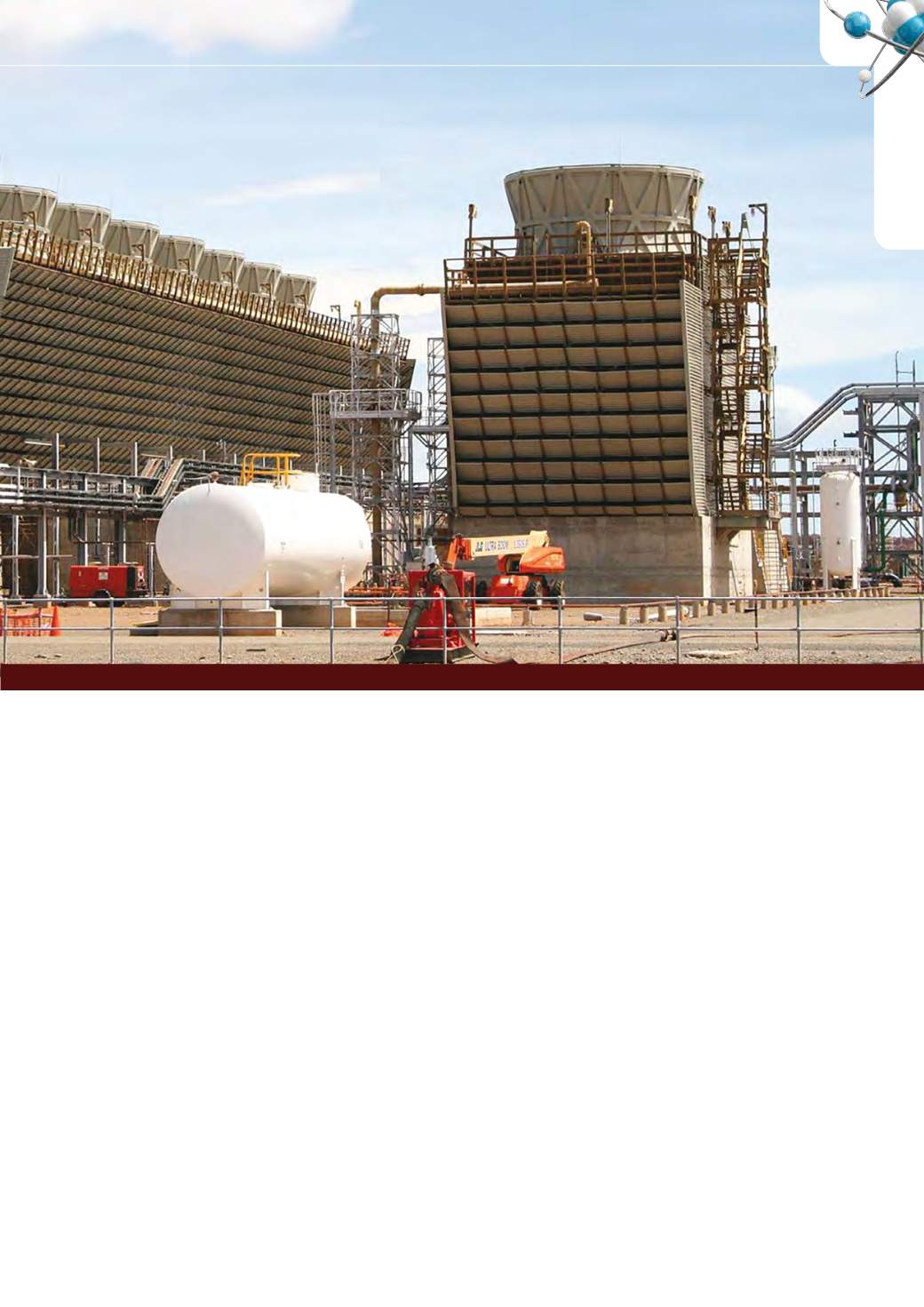

7
Chemical Technology • April 2015
When a cooling tower goes offline it slows production. In some
cases it can even cause the refinery to shut down completely.
Automating cooling towers
On-line measurements are required to provide the data
needed to tightly control cooling towers, maintain the assets
and prevent over-maintenance. Automated monitoring also
prevents failures, thus limiting downtime in each cooling
tower section.
Automated monitoring provides better control to improve
tower efficiency andminimize water consumption. Having the
right data enables proper dosing of the cooling tower water to
prevent excess chemical use, and to provide the right water
chemistry to avoid fouling and damage to the pipes. Proper
dosing also improves cooling tower efficiency as well.
Cooling towers are evaporative coolers and thus are
limited by the wet bulb temperature of the cooling air. Wet
bulb temperature measures how much water vapour the
atmosphere can hold at current weather conditions. A lower
wet bulb temperature means drier air and lower cooling
tower temperatures. Tower performance is calculated as a
function of supply and return water temperature, and wet
bulb temperature.
With proper data, the control system can calculate and
monitor the cooling tower performance index, saturation
index, conductivity, pH, and fan and supply pump health, and
take the necessary steps to control the system or instruct
maintenance to solve a problem. Typical measurement points
include fan vibration, wet bulb temperature, level of the water
supply, pressure and temperature on the water supply and
return, and pH of the water supply.
WirelessHART makes it possible
While it is desirable to make such measurements, the cost
of installing and maintaining conventional 4-20 mA wired
instrumentation can be prohibitive. As noted above, the
process environment around cooling towers is corrosive to
wiring, mainly due to chemical vapours. This means extra
care must be taken in installing wiring, conduit, cable and
intrinsic safety devices in the presence of flammable gases.
In addition, wired instrumentation requires a power supply,
I/O cards to accept the signals, a data acquisition system to
collect data frommultiple sensors, and ameans of transmit-
ting the data back to the control system.
WirelessHART instruments, on the other hand, do not
require much of this infrastructure. Because WirelessHART
devices can be battery-powered, they do not require a power
supply, intrinsic safety equipment or any kind of wiring. The
transmitters send data wirelessly to aWirelessHART gateway,
either directly or through a network of other WirelessHART
devices.
To protect the devices from the corrosive atmosphere,
pump vibration, flow, temperature, level and pH transmitters
can be installed in enclosures mounted near the cooling
tower (Figure 3). Gateways can be located close to the cool-
ing tower, but away from the corrosive environment. Wired
PETROCHEMICALS
Figure 1: Cooling towers at many refineries have old instrumentation, some of it out of service.



















